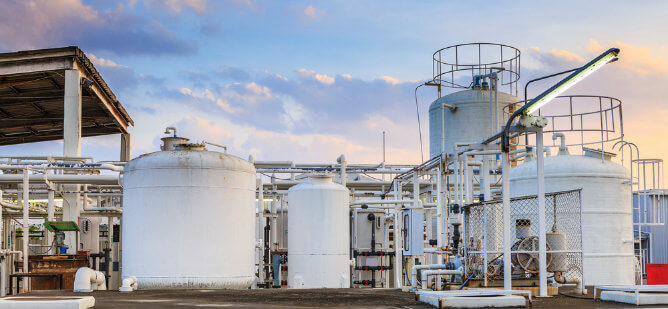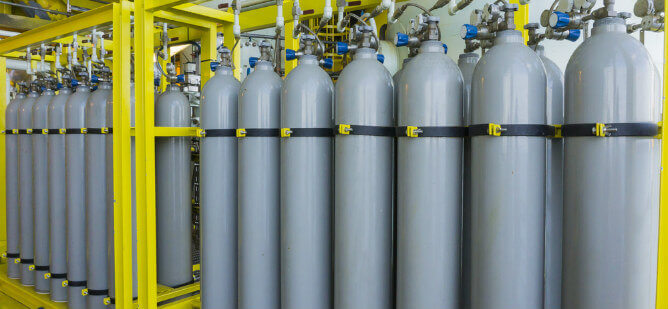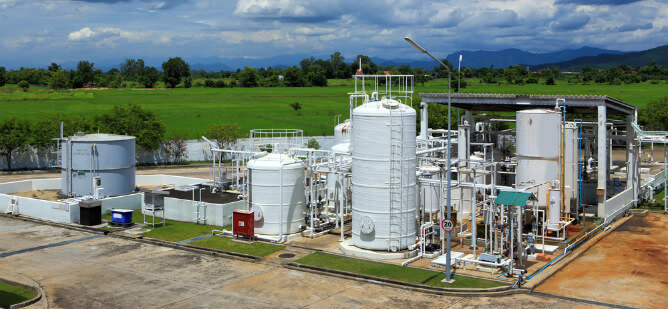
Most Common Uses of Nitrogen in Oil and Gas Industry
What Is Nitrogen Gas?
Nitrogen is an element found abundantly in nature which makes up about 78% of air by volume composition or 75% of air by weight. It is an odorless, colorless, and tasteless gas with inert properties.
Industrial uses of nitrogen are diverse. However, our focus in this article will be on the oil and gas industry.
What Is Nitrogen Gas Used for?
It has high compressibility, inert properties, and is miscible with water, making it suitable for a wide range of industrial applications. For example, pharmaceutical companies use high-purity nitrogen to synthesize and preserve chemical compounds used to produce drugs.
Food processing companies use nitrogen in the packaging of perishable foods to increase shelf life. Metal manufacturers use N2 to prevent oxidation during the formation of new metals. Industries involved in polymer production use nitrogen gas to harden materials such as plastics and rubber. These are just a few industrial uses of nitrogen.
Nitrogen gas is incredibly useful in the upstream oil and gas industry for stimulating production in brownfields or reservoirs with low permeability. Due to its relatively inert properties, it does not cause downhole combustion, unlike CO2 and methane gas.
Use of Nitrogen in the Oil and Gas Industry

Nitrogen industrial uses cut across onshore and offshore applications including:
Nitrogen Injection in Oil and Gas Wells
Typically, the formation pressure of an oil and gas well will decline after production has been sustained for a duration of time. In the primary recovery phase, this pressure is used alongside pumping operations to flow hydrocarbons to the surface. In this phase, only 10 – 15% of the oil initially in place (OIIP) is recovered.
After a while, secondary recovery techniques such as gas lift (in the gas cap) and waterflooding (at the production zones) will be employed to stimulate production by sweeping more oil and gas towards the production tubing, recovering an additional 20 – 40%.
When the secondary recovery methods become inadequate to sustain production, Enhanced Oil Recovery (EOR) methods can be employed. Nitrogen gas can maintain or ramp up existing production when injected into a reservoir with depleted pressure or low permeability. CO2 and methane can also be used, but nitrogen is more cost-effective as it can be generated on-demand and does not require extensive pipework for injection. EOR using nitrogen injection can help operators recover up to 60% of the OIIP.
To perform nitrogen injection, pressurized nitrogen gas is injected into a reservoir, stimulating the flow of hydrocarbons from hard-to-reach areas. Nitrogen gas of a specific minimum miscible pressure is used for the operation. At very pressures (up to 15,000 psi), N2 forms a miscible slug with a powerful vaporizing drive which improves the hydrocarbon recovery factor.
Pipeline Drying
Pipeline drying is a nitrogen gas application used for displacing contaminants such as unwanted aerosols or drying pipelines after a hydrotest, which is typically required for pipeline commissioning.
Nitrogen Purging
Nitrogen purging is the process of displacing hazardous gases and mists from process systems, to prevent inadvertent chemical reactions with volatile hydrocarbons, and to reduce the oxygen level in explosion-prone environments.
Pressure Testing
Oilfield operators use nitrogen during pneumatic pressure testing of safety equipment such as Blowout preventers (BOPs), Christmas (production) trees, and pressure vessels.
Nitrogen Blanketing
Nitrogen blanketing or tank blanketing is the use of nitrogen in storage tanks to prevent volatile chemical reactions between chemicals or volatile hydrocarbons by displacing the oxygen present.
On-site Nitrogen Generation vs. Compressed Cylinder Delivery

There are two main methods which enable the industrial use of nitrogen:
- Nitrogen gas manufacturers generate nitrogen at their plants, compress the gas into cylinders and ship them to client locations for sale.
- Industrial users generate nitrogen on-site from atmospheric air.
For companies that require a large supply of nitrogen for their processes, on-site generation is the most cost-effective option.
On-site nitrogen generation offers several advantages over the use of cylinders including:
- Safety & Reliability: On-site nitrogen generators are modular, containerized systems that require infrequent maintenance. Unlike cylinders, they are less prone to leaks and damage.
- Unlimited Supply: Unlike cylinders which have limited volumes, on-site nitrogen generation systems can generate a constant supply of the product.
- Cost Savings: Nitrogen generators save operators from excessive logistics costs involved in transporting bulky cylinders to and from the site.
To generate a constant supply of nitrogen from atmospheric air, a nitrogen generator will be required. NiGen offers nitrogen generator rentals for oilfield operations.
What Is a Nitrogen Generator?
A nitrogen generator is a piece of equipment capable of generating on-demand, high-purity industrial nitrogen from atmospheric air. Nitrogen generators can be Pressure Swing Absorption (PSA) or membrane type.
PSA nitrogen generators separate the individual constituents of air based on their molecular characteristics and affinity for adsorbent mediums such as zeolite or Granular Activated Carbon (GAC), while membrane generators work by separating pure N2 from atmospheric air using a semi-permeable membrane.
Trust NiGen for Your Industrial Nitrogen Gas Needs
NiGen is an industry-leading manufacturer of on-site nitrogen systems. We boast a wide selection of skid-mounted, standard, or custom-made nitrogen generators for the oil and gas and petrochemical industries.
For more information, please call 713-956-8022 or contact us online today.
